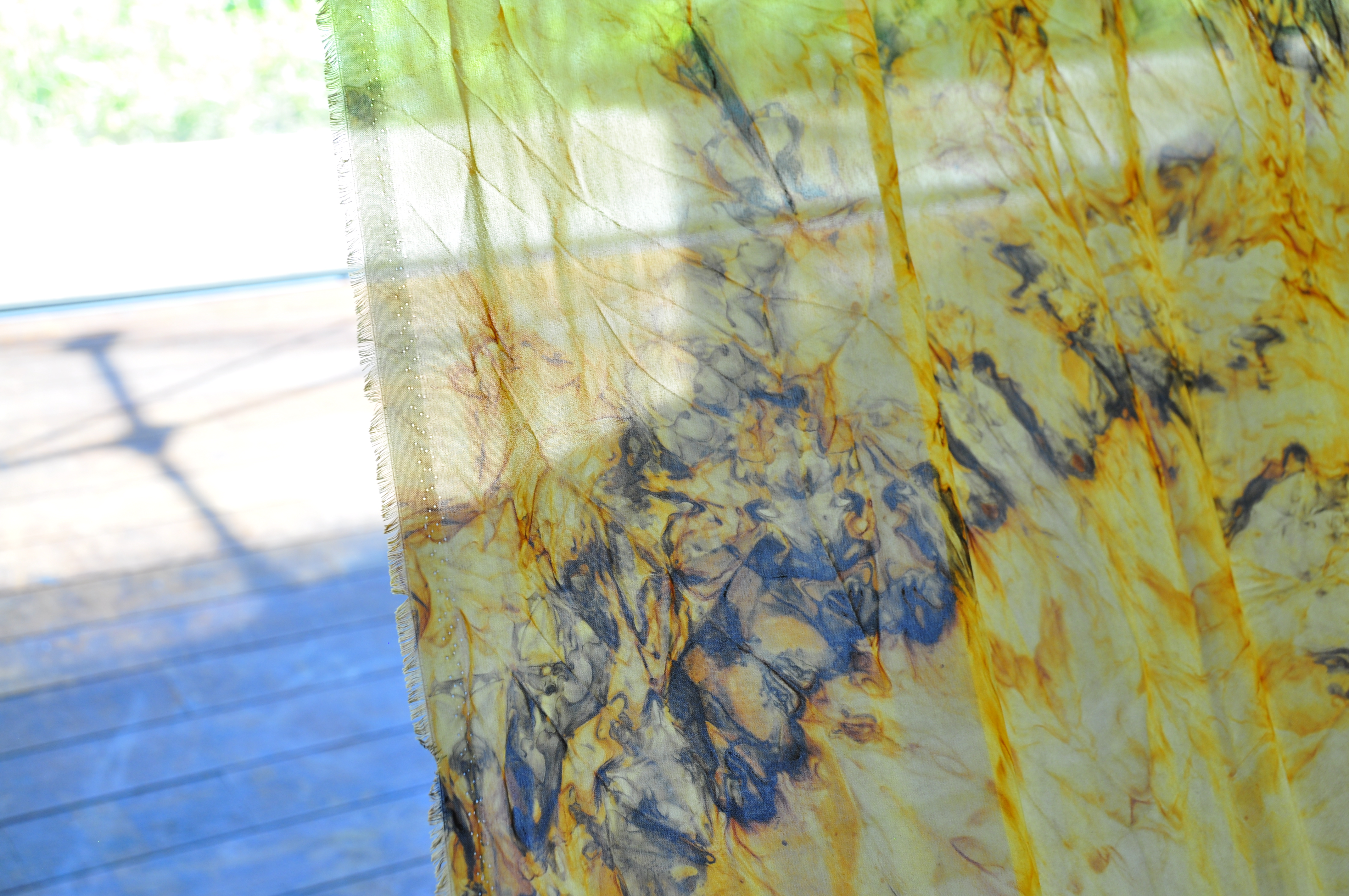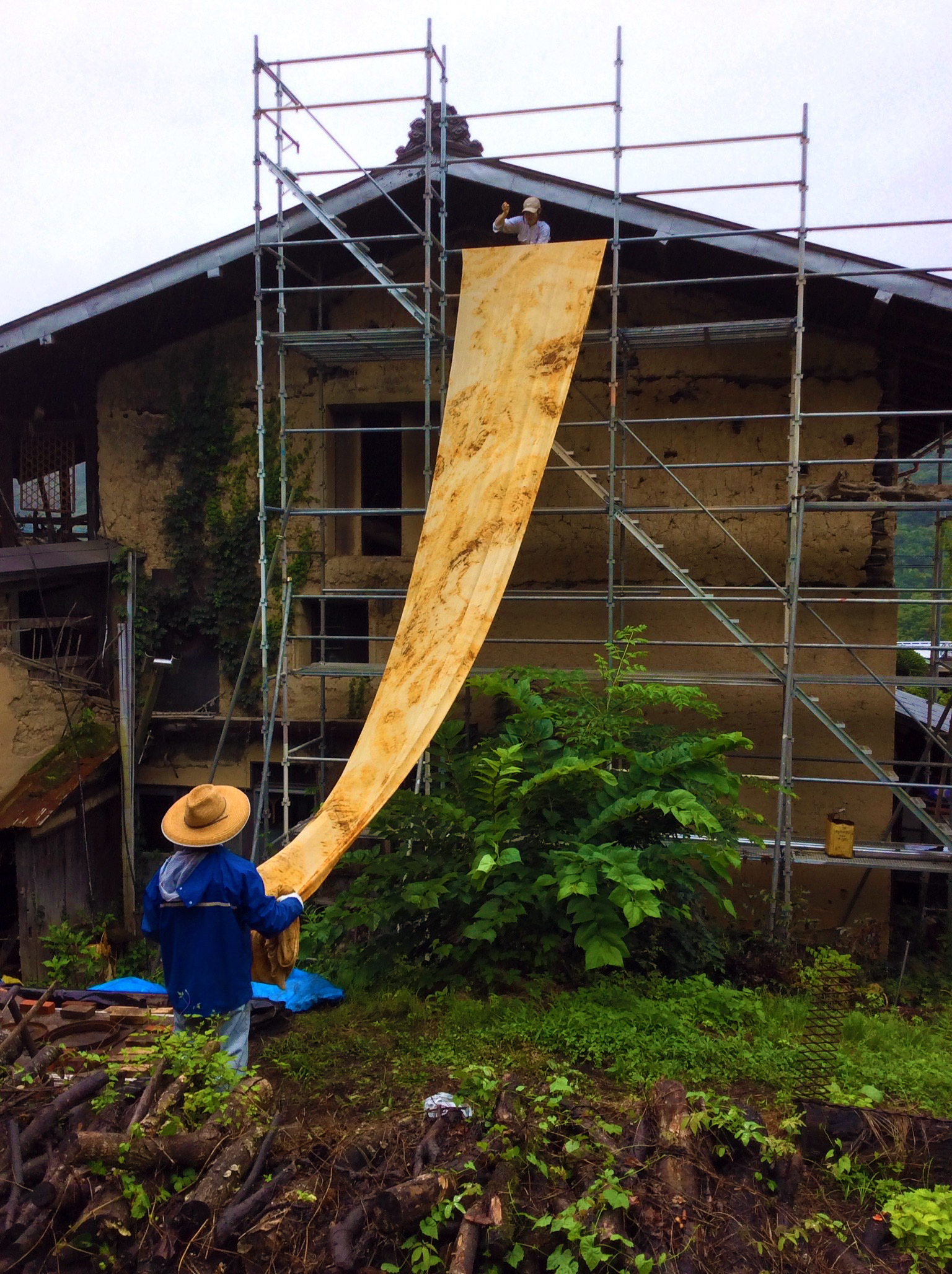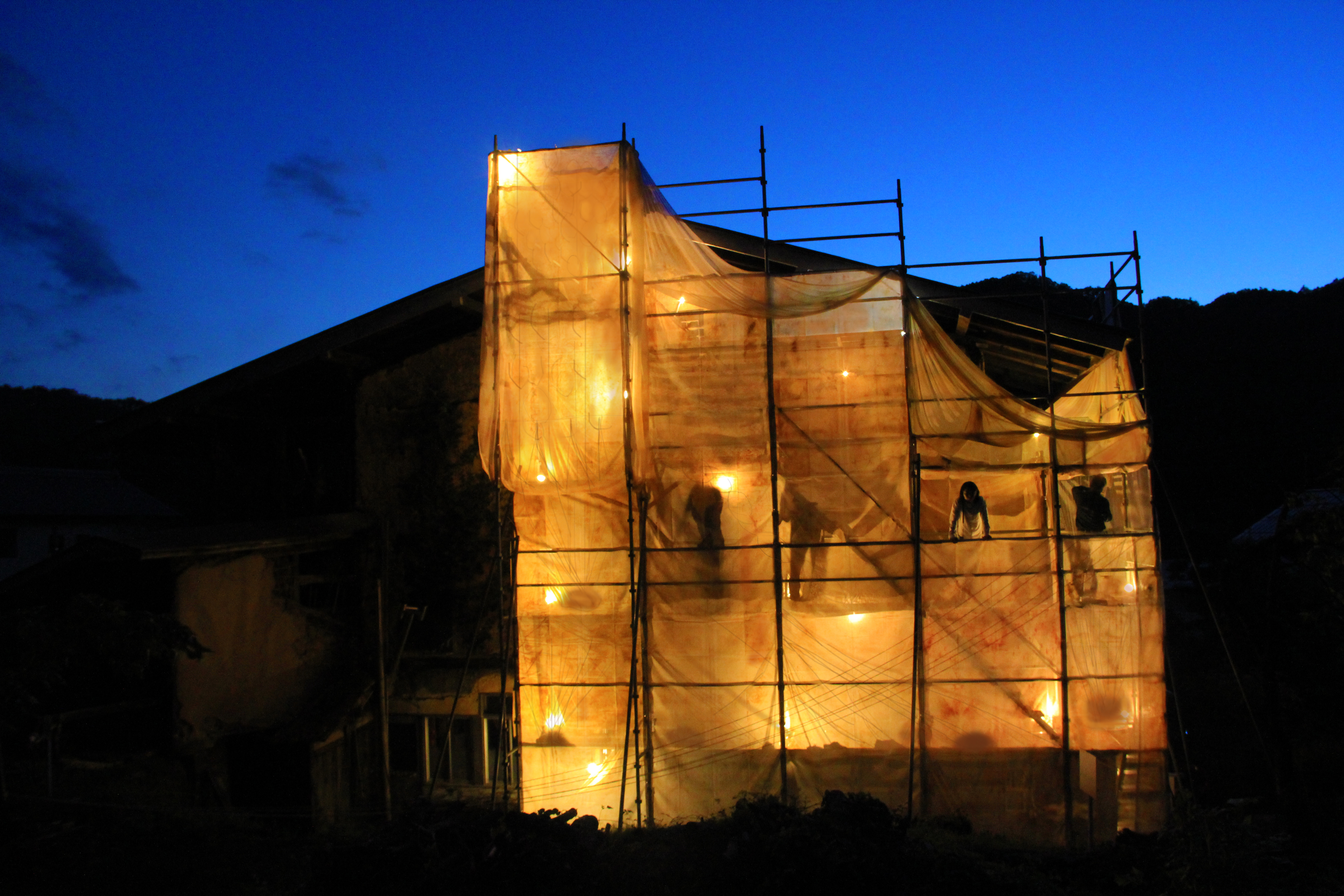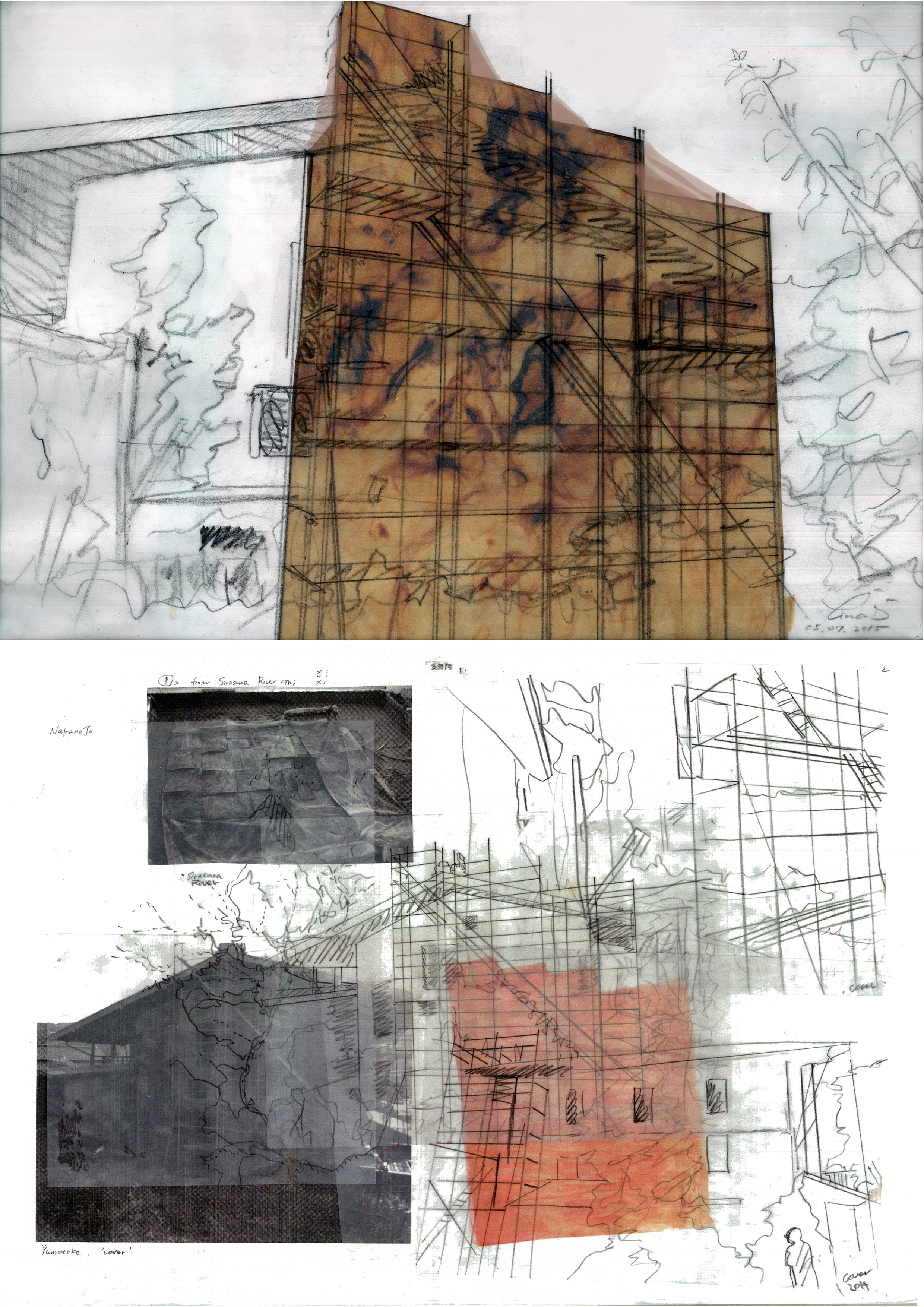since 2011
Earth PrintA method to expose the simplest of elements possessed by this land at its foundation. The most common red on the Earth is extracted from iron oxide. Iron is the most abundant element on the Earth and it lets us see the uniqueness of the each local land on the Earth via varieties of the exposed colors. Imagine that the water of the Earth, rooted in this land from the ancient times, is the "blood" of the Earth. Then the outer layer of the Earth, which is visualized through the corrosive traces seeped in rust via the rust of iron oxide, can be regarded as the "skin" of the Earth. Earth Print Project is an attempt to reveal the simplest elements of the Earth by visualizing the relationship between the blood and the skin. Through the process of extracting elements on the land, we can see the uniqueness of the each local land on the Earth via the varieties of the exposed colors. We are in the age of globalization and things are becoming uniform. However, once variations of local uniqueness on natural things are lost, they will never be restored. So we must encourage the society not to forget the sensibility of localities. The project values the idea of thinking environmental problems globally and act locally. Earth Print Project can provide a new point of view in both art and technology, which gives each of us the opportunity to re-think the problems and re-mind them in a different way. Earth's Blood Test River, Rain, Sea, Pond, etc... Earth of water spot* Japan / Tokyo, Kyoto, Gunma, Ibaraki, Kyoto, UK / Scotland / Edinburgh *Water quality is the physical, chemical and biological properties of water caused by the inclusion of impurities other than pure water (H2O). Pure water is a combination of hydrogen and oxygen, whereas water in nature contains a variety of impurities. For example, rainwater contains nitrogen, oxygen, carbon dioxide, sodium, potassium, calcium, and magnesium. Groundwater also contains silicic acid, bicarbonate of soda, iron, and manganese. Additionally, when it comes to water from rivers and lakes, it contains clay particles, bacteria and microorganisms in addition to dissolved substances. |




|